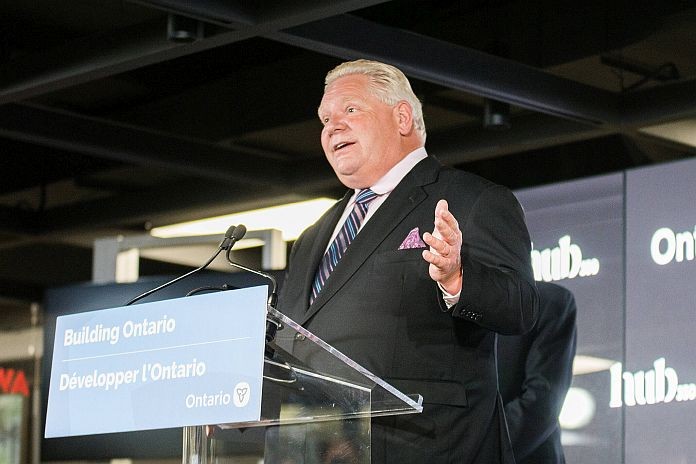TORONTO, Canada — As part of the 2021 Fall Economic Statement, the Ontario government will introduce legislation that, if passed, would raise the general minimum wage from $14.35 to $15.00 per hour effective January 1, 2022.
Under the proposed changes, the special minimum wage rate for liquor servers would be eliminated and they would be entitled to the general minimum wage. Students under 18, homeworkers and hunting, fishing and wilderness guides would also see an increase in their special minimum wage rates.
Details were shared today by premier Doug Ford, Monte McNaughton, minister of labour, training and skills development and Peter Bethlenfalvy, minister of finance.
“Ontario’s workers have been the unsung heroes of this pandemic, as they’ve stocked shelves, kept our supply chain moving and helped so many of us enjoy a meal among family and friends at a local restaurant,” said premier Doug Ford. “When we asked labour leaders what their priorities were, increasing the minimum wage was at the top of the list. As the cost of living continues to go up, our government is proud to be working for workers, putting more money into their pockets by increasing the minimum wage.”
Liquor servers have previously received below the general minimum wage, based on the belief customer tipping can make up the difference. However, many of these workers have increasingly seen their tips pooled and redistributed among many staff, making it harder for them to make ends meet. If the legislation is passed, liquor servers would be treated more fairly and see an unprecedented 19.5 percent increase in their minimum hourly wage, as it changes from $12.55 per hour to the harmonized $15 per hour minimum wage.
The Ontario government is introducing legislation to increase minimum wages as the cost of living has increased considerably over the past several months, but wages for many have not kept pace.
“Over the past few weeks, our government has rolled out a historic number of reforms to rebalance the scales,” said minister McNaughton. “Building on these actions, today, our government is ensuring workers who need our help the most receive their fair share of the economic pie. We will continue to use every tool in our toolbox to help workers in our province find meaningful careers that let them earn themselves bigger paychecks and build better lives for themselves and their loved ones.”
Special minimum wage rates are also proposed to increase:
- Students under the age of 18 who work 28 hours a week or less when school is in session, or work during a school break or summer holidays would see an increase from $13.50 to $14.10 an hour.
- Homeworkers (those who do paid work out of their own homes for employers) would see an increase from $15.80 an hour to $16.50 an hour.
- Hunting and fishing guides currently have a minimum rate of $71.75 for working less than five consecutive hours in a day, and $143.55 for working five or more hours in a day. Their new proposed rate would be $75.00 for working less than five consecutive hours in a day and $150.05 for working five or more hours in a day.
“An incredible debt of gratitude is owed to the workers of Ontario. These dedicated men and women kept store shelves stocked and supply chains going through the pandemic,” said Peter Bethlenfalvy, minister of finance. “However, we also recognize that for too long workers have been falling behind, and that wages for many have not kept up with the cost of living. They had Ontario’s back, and now, our government has theirs. Ontario workers should be in a race to the top, not a race to the bottom.”
These proposed changes are part of the government’s broader effort to support, protect and attract workers, and make Ontario the top place to live, work and raise a family. The government will release its plan to protect Ontario’s progress against COVID-19 and for building the foundation for the province’s recovery and prosperity in the 2021 Ontario Economic Outlook and Fiscal Review on November 4.
Quick Facts
- Due to the pandemic, there have recently been higher than usual increases in the cost of living.
- The October 2021 annual minimum wage increase was based on the 2020 annual Consumer Price Index increase, which does not reflect the recent increases.
- A full-time worker making the general minimum wage could see an annual earnings increase of $1,350 in 2022 under the proposed legislation.
- From January-August 2021, there were 763,500 workers at or below the proposed general minimum wage of $15 in Ontario (StatsCan Labour Force Survey, 2021).
- Most minimum wage earners are women and nearly 73 percent of working 15 to 19-year-olds are at or below the proposed general minimum wage of $15 per hour.
- The industries employing the most minimum wage earners are accommodation and food services, and retail trade.
- Nearly 37 percent of workers at or below the proposed general minimum wage of $15 per hour are in retail trade and almost 24 percent are in accommodation and food services.





